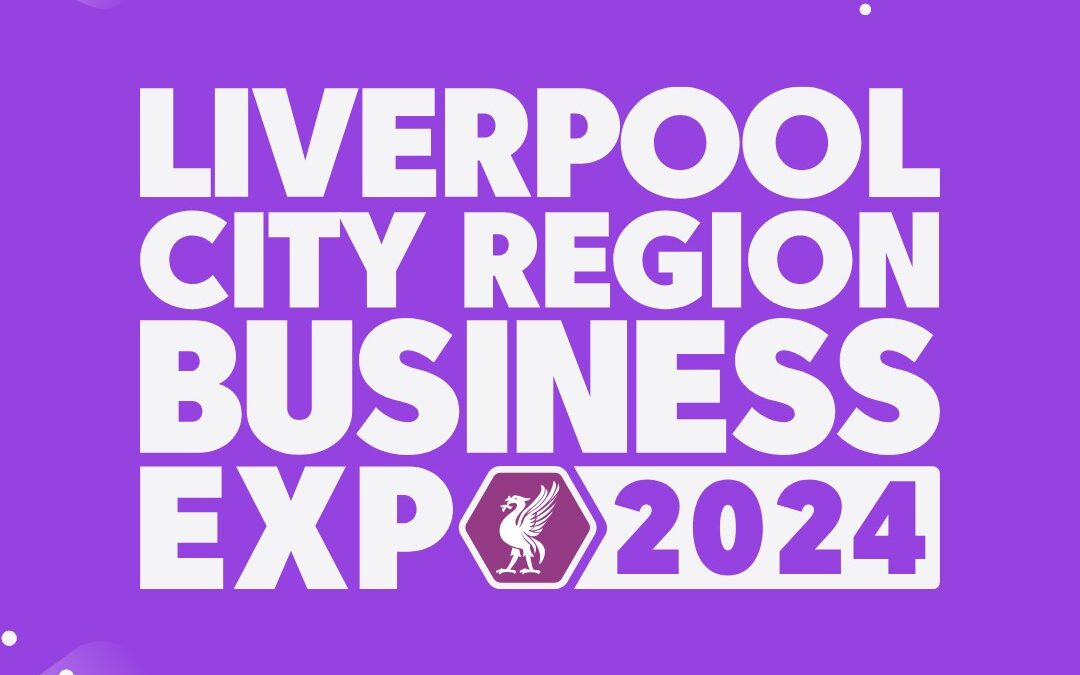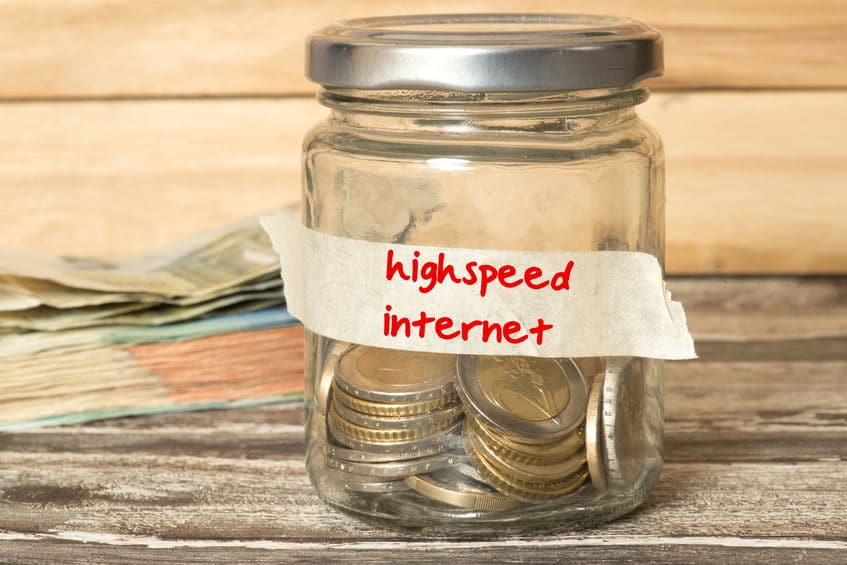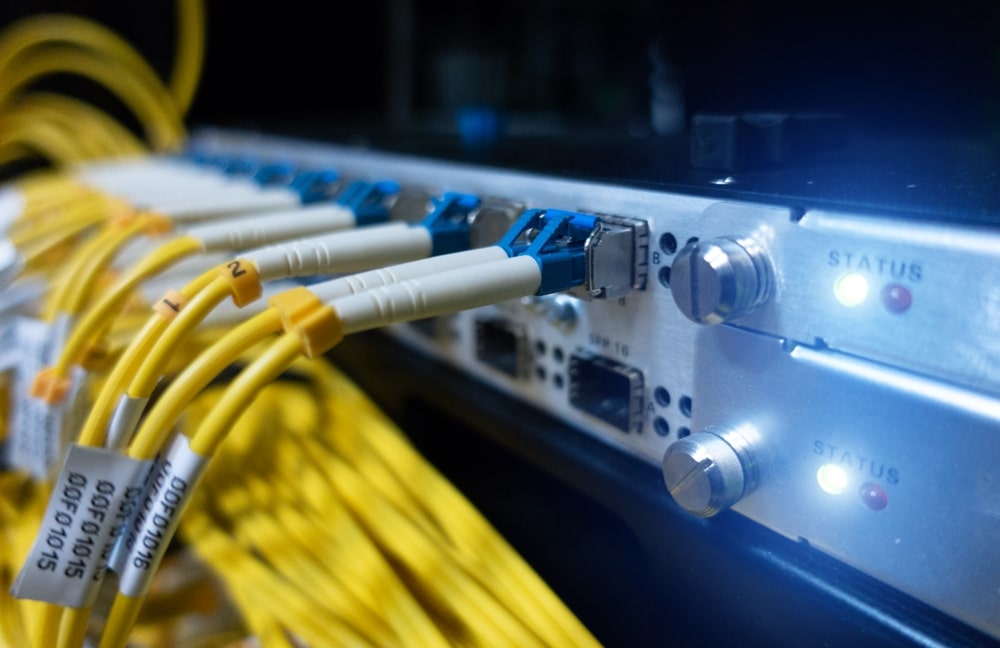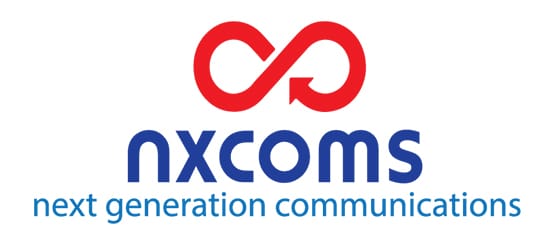
Nov 4, 2025 | Blog, Connectivity, News
Let’s be honest – when most people hear “SIM card,” they think of their phone. Maybe you use it for calls, emails, a bit of WhatsApp and a scroll through social media when the WiFi’s having a day off.
That little bit of plastic does a lot… But for businesses that rely on staying connected – think construction, security, transport or even vending – a standard SIM just doesn’t cut it.
Because when your work takes you off the beaten track, signal matters. And one bar of patchy coverage can mean lost data, downtime and a lot of swearing on-site (not from us, obviously).
That’s where multi-network SIMs step in – and trust us, they’re a bit of a game changer.
What’s a Multi-Network SIM, Then?
Unlike standard SIMs that tie you to a single provider, multi-network SIMs automatically connect to whichever network has the strongest signal.
So instead of relying on just O2, EE or Vodafone, you get all of them – whichever one gives you the best coverage wherever you are.
They’re also available as eSIMs, which means no fiddly bits of plastic to swap around. Just scan a QR code and you’re online instantly. Physical SIM, eSIM, or both – whatever works best for your setup.
Add in unlimited data options and the ability to run everything on a private, secure network, and you’ve got a whole new level of reliability.
Why Single-Network SIMs Fall Short
Let’s paint the picture. You’ve got a team on a temporary site in the middle of nowhere. The first day goes fine – decent signal, happy days. Then the next week you’re a few miles down the road and… Nothing.
Your devices can’t connect, systems won’t update and suddenly productivity’s gone out the window.
It’s not just construction, either.
Security firms lose camera feeds. Transport companies lose vehicle tracking. Vending machines stop taking card payments.
And when you’re relying on one network’s patchy coverage, there’s not much you can do except wait for it to magically improve. (Spoiler: it won’t.)
Multi-Network SIMs: The Simple Fix
Multi-network SIMs solve all that hassle. They automatically latch onto the strongest network in the area – no faffing about, no downtime, no swapping SIMs.
That means your digger, security camera or delivery van stays online whether it’s in a city centre or miles away from civilisation.
In short: you get consistent, reliable connectivity that keeps your business running, no matter where your kit ends up.
Real-World Benefits Across Industries
Here’s how businesses are using multi-network SIMs right now:
Construction
Temporary sites pop up where broadband doesn’t. A multi-network SIM gets you instant internet access, so your team stays connected and your project stays on track.
Security
CCTV and alarm systems only do their job if they’re online. These SIMs make sure your equipment’s connected 24/7, even when one network drops off.
Transport
Fleet tracking and onboard WiFi don’t have to stop the moment you hit a coverage black spot. Multi-network SIMs keep vehicles connected from A to B (and everywhere in between).
Vending Machines
Every card payment relies on a stable internet connection. With a multi-network SIM, payments go through smoothly – whether your machine’s in a city office or a quiet village hall.
When Security’s as Important as Signal
If your business handles sensitive data, like customer payments, being connected isn’t enough – you need to be secure too.
That’s where secure private networks come in. They encrypt data and lock it inside a private environment, so it’s safe from prying eyes.
Think of it like this:
A standard SIM is an open door.
A secure multi-network SIM is a locked vault, and only you’ve got the key.
Why Businesses Choose Nxcoms
At Nxcoms, we’ve seen far too many businesses struggle with dodgy connectivity that slows them down. So we’ve made it simple.
We supply multi-network SIMs with unlimited data and private, secure network options – all explained in plain English. No jargon, no nonsense, just connections that work.
Whether you’re managing remote sites, tracking vehicles, running security systems or keeping vending machines online, we’ll get you connected.
Smarter, stress-free connectivity from people who actually get it. Why not give us a call?
Nxcoms – 0161 711 1100

Sep 15, 2025 | Blog, News, Nxcoms
If you’re running a small business, chances are you’ve had a run-in (or several) with a big-name telecoms provider. Long waits on hold, being passed around five different departments, vague contracts full of jargon, promises that somehow never quite materialise… Sound familiar?
That’s exactly the sort of frustration that inspired us to build Nxcoms differently. We’re not here to be “just another telecoms company.” We’re here to make life easier for business owners like you – with clear, reliable and personal telecoms that actually do what they say on the tin.
Here’s why hundreds of businesses across the UK choose Nxcoms, and why you might want to as well.
One Supplier. Zero Hassle.
Broadband from one company, phone systems from another, mobiles from someone else, cloud services from a completely different provider…Before you know it, you’re juggling four or five different suppliers. That’s four or five contracts, four or five support numbers and four or five ways to lose an afternoon in hold music purgatory.
With Nxcoms, you get all your telecoms from one supplier. Broadband, leased lines, phone systems, mobiles, cloud – the lot. That means one bill, one point of contact and one less headache.
Instead of wasting your time coordinating between different providers, you can focus on actually running your business.
Business-Only, Built for Reliability
Unlike some of the household-name providers, we don’t split our attention between home users streaming Netflix and businesses trying to run their operations. Nxcoms is business-only. Every connection, every system and every service we offer is designed with reliability and performance in mind – because we know downtime costs money.
Put simply, we care about your business staying online, not just your weekend movie marathon.
Everything In-House
One of the biggest gripes we hear from business owners is this: “Every time something goes wrong, I’m told to call a different company.”
Not with us. At Nxcoms, everything is handled in-house – project management, installation, support, billing, the lot. If you need something, you don’t get bounced around. You just call us, and we deal with it.
That means no chasing subcontractors, no confusion over “who’s responsible” and no endless finger-pointing. We take responsibility from start to finish.
You’re Not Just a Number
We know how frustrating it is to ring a call centre, wait half an hour and finally reach someone who doesn’t know your business, your setup or even your name. With the big providers, you’re just another account number in a giant database.
With Nxcoms, you’ll get a named contact who knows you and your business. When you call us, you’ll speak to someone who already understands your setup and can help straight away – not a stranger in a remote call centre reading from a script.
It’s a personal approach that bigger providers simply can’t match, and it makes all the difference when you need help quickly.
No Jargon, No Surprises
Telecoms can be confusing. The industry is full of acronyms, buzzwords and complicated pricing structures that seem designed to make things harder to understand.
We do things differently. At Nxcoms, everything is clear and transparent. No hidden charges, no baffling jargon, no vague promises. We’ll explain things in plain English, so you always know exactly what you’re getting and what you’re paying for.
We Keep Our Promises (Or You Don’t Pay)
Here’s a bold one: if we don’t do what we say we’ll do, you don’t pay.
That’s not marketing fluff. That’s how much confidence we have in our service. If we make a promise, we keep it. And if we ever fall short, you won’t be left out of pocket.
It’s that simple.
Built for Businesses Who’ve Had Enough
We know the type of businesses we’re best suited for: companies that’ve been let down by the big names. Maybe you’re fed up with long wait times, dealing with call centres halfway around the world or never being able to get a straight answer from your current provider.
If that’s you, you’ll find working with Nxcoms refreshingly different. You’ll get local support, a personal relationship and a provider who treats your business with the attention it deserves.
Ready for a Better Way?
Your telecoms should be the last thing you worry about, not the first. With Nxcoms, you get one supplier for everything, a business-only focus, in-house expertise, a personal relationship, jargon-free communication and promises you can rely on.
So, if you’re ready to stop wasting time on hold and start working with a provider who actually gets it, let’s talk.
Give us a call on 0161 711 1100, or drop us an email at info@nxcoms.co.uk.
We’ll happily sit down with you, no jargon, no pressure, just a proper conversation about what your business really needs.
Because at Nxcoms, it’s not about being “another telecoms provider.” It’s about being the right one for your business.

Jun 1, 2024 | Blog, LCR Connnect, News
Nxcoms will be exhibiting at the Liverpool City Region Expo on 14th June 2024
It’s time for the Liverpool City Region to get on board, because we’re bringing the Faster Britain Bus to the Liverpool City Region Expo!
The Faster Britain bus has been travelling up and down the country, delivering everything from tea and tech talks to education sessionson the impending copper phone line switch-off.
Now Nxcoms and LCRConnect are bringing it to Liverpool where we will be showing you how full fibre can benefit you and your business.
Look out for us on the double-decker bus – you could be in with a chance of winning a luxury weekend getaway for two!
Book your free visitor pass today by going to https://www.shoutexpo.com/attend-liverpool or scan the QR code below:


Sep 4, 2023 | Blog, Connectivity, Data, News
If you’re thinking about making the switch to full fibre optic internet, the cost of it is likely high on your list of questions.
Isn’t it going to be expensive to use new technology?
And the trouble is, trying to find out how much the change-over will set you back can be overwhelming.
There is a vast range of offers available from different providers… How are you supposed to know who or what to opt for? How do you compare like for like? Which deal will suit your needs best?
So, we’re here to shed some light on the subject. Read on to find out how much it costs to switch to full fibre optic internet.
First Things First…
Is fibre technology available in your area yet?
There’s a chance it might not be.
By the end of 2025, the whole copper cable network that so many of us still depend on to send and receive data will no longer be operational. This momentous event has been dubbed the Big Copper Switch-Off.
If your business hasn’t switched to full fibre optic internet by then, you will have a lot of unscheduled offline time until you get hooked up. It won’t just be you either – loads of other households and businesses will be clamouring to get back online ASAP. And where there’s heavy demand, prices will rise, so it’ll almost certainly cost you more.
Want to know more about the big copper switch-off? Read this blog.
So what does that mean for you at the moment? Well, because Openreach is completing the switch in phases, full-fibre internet might still need to be created in your area. Full fibre technology is more likely to be installed in high-population areas like big towns and cities first.
Check with your internet service provider to see if you can switch to full fibre optic internet. And while you’re there, ask them if they’ll do you a deal for tacking full fibre broadband onto your existing business phones account. This could save you time and money spent searching elsewhere for more expensive rates.
What Does It Cost To Switch To Full Fibre Optic Internet?
Generally speaking, you can expect to pay somewhere between £40 and £100 per month for contended business full fibre broadband. This increases to about £300 for uncontended leased line packages, when you don’t share your bandwidth with anyone else.
The beauty of fibre broadband is that it’s really flexible, meaning businesses can choose a package that perfectly suits their needs. This also means quite a few factors contribute to the overall cost when you switch to full fibre optic internet.
Let’s take a look at them.
Add-Ons
Need extra monthly downloads? 4G/5G backup?
No problem.
Many providers offer extras that business owners can add to their internet package of choice to tailor it, so it perfectly suits their monthly internet-related activities.
Set Up Fees
Finding providers who don’t charge a set-up fee is easy, but before committing, it’s crucial to check the details of the package you’re opting for. Signing a contract for an internet package that won’t meet your business internet is frustrating, takes time to sort out and may cost you a packet to end a contract early.
Of providers who currently charge a new user to get them connected, the typical one-off price ranges from around £30 to £95.
Upfront Fee Vs Monthly Fee
When a business signs up for a new internet contract, they’re usually graced with an introductory monthly cost that increases after the initial contract period ends. So whilst the ‘upfront’ monthly fee begins at £25, it might rise to £55 after the first 12 months. The providers can be even sneakier by tying you into a 2 or 3-year contract, then hiking up the prices after the second year. This sort of unexpected fee can occur with the larger providers, such as BT and Virgin Media.
Always double-check the figures when comparing broadband packages to avoid nasty surprises later down the line. And don’t be afraid to let companies know if you have a better deal on the table elsewhere – they might negotiate with you.
Average Speed
Internet providers tend to feature a tiered system of business broadband offerings so that they can appeal to a wide range of customers. Low-tier packages usually give users 80mb for approximately £30 to £40 per month. Higher tiers, up to 1gb hyperfast full business broadband, start at around £45 for a basic package but can reach the hundreds.
What Should You Consider When You Switch To Full Fibre Optic Internet?
Whilst it’s certainly an important factor, the cost isn’t the only part of choosing a full fibre optic internet provider.
Have you looked into their customer service record? What about response times? Are they likely to issue complicated contracts that leave you in a spin?
If you tend to gravitate towards the big-league business internet providers, you might come up against these less-than-desirable blockers to efficient internet usage, and more.
Take slow response times, for example. Larger ISPs have a tonne of customers, so naturally, call waiting times and the time it takes to fix issues are going to be much slower than the more personal touch of a small company.
And what use is a cheap, off-the-shelf deal if you can’t get through to the service team when things go south?
Not convinced? Read more about large telecom corporation issues in our recent blog, ‘5 Reasons To Avoid The Big Telecoms Providers For Your Business Internet’
Ready To Make The Switch To Full Fibre Optic Internet?
The market is vast and can feel hard to navigate.
Depending on your business’s internet needs, full fibre optic broadband could cost an average size business from £45 to £100 a month.
Above all, it’s crucial to check the finer details of any contract before dishing out for full fibre optic internet. And don’t forget, there’s more choice than just the names you see on TV ads. Smaller, independent telecoms providers have expertise in matching businesses with packages that deliver reliability, value and quality.
Smaller comms providers can tailor their services to meet the needs of your business, can fix issues quickly and pride themselves on customer service.
Still not convinced full fibre optic broadband is for you? Don’t know enough about it to make the leap? Find out all about the benefits of full fibre optic broadband in our recent blog.

Jul 24, 2023 | Blog, Cloud, Connectivity, Data, News
We’re staring down the barrel of The Big Copper Switch-Off.
In two years, the whole copper cable network that so many of us still rely on for our home and business internet will no longer be operational.
What that means is that if your business is still dependent on copper cabling when the time comes, you’re going to be offline until you make the switch to fibre optic technology.
And we mean COMPLETELY offline.
Think about it. How much of the day-to-day running of your business depends on a healthy internet connection? Do you use email? Do you have a website? Use video conferencing? Cloud-based servers, internet banking, even phone systems?
How will your customers get in contact with you? And how will your employees get their work done with no internet access?
It’s simple. They won’t.
With that in mind, smart business owners like you are doing their homework now to find out all about fibre optic broadband and how they can get it.
Oh yeah, and that little thing called money. How much does business full fibre internet cost?
Recap: What Is Full Fibre?
It might feel a tad overwhelming when you’re researching fibre optic broadband to find out how much full fibre business internet costs.
Terms like FTTP, Super-fast, FTTC, Ultra-fast and Hyper-fast might start to swim before your eyes as you struggle through jargon-heavy web pages, searching for a simple answer. You just want to know one thing. How much does business full fibre internet cost?!
So why is it so complicated?
Well, our ol’ copper cable network is still in use. As dramatic as it sounds, the big switch-off is more of a switchover, happening in phases, with Openreach on task to have made the full swap by the end of 2025.
And so up until that point, there will be telecoms packages available that utilise both technologies – copper and fibre optics – to smooth the process of installing fibre optic infrastructure UK-wide and getting everyone connected. And, by making use of both data transfer methods, businesses can simultaneously achieve faster broadband and delay stumping the cash for full fibre internet cost. For now, at least.
So what exactly is full fibre?
Full fibre, also referred to as FTTP (or fibre to the premises), is a single, leased line of beautifully thin and flexible fibres wrapped around a glass core that transmits your data at light speed. One single cable for your business and your business alone covers the whole distance from the exchange to the green cabinet, straight to your front door.
The alternative is a combination of fibre optic and copper. Here, fibre optic cable is used to the cabinet, where the copper cabling picks up the baton and continues the data transmission to your premises. Many homes and businesses use this now if they’re on a ‘fibre optic’ broadband package. It’s a kind of halfway house.
But we will all need full fibre in a couple of years. It’ll be full fibre or nothing. Because when the copper cables go kaput, there won’t be any hybrid broadband packages anymore, leaving most people disconnected from the world wide web.
We’re painting a pretty murky picture here, aren’t we? Don’t worry. The reality of the big copper switch-off is quite the opposite. It’s advancing us to a position where your internet reliability and speeds will be phenomenal.
You’ll say goodbye to competing for bandwidth on the old copper cable system when you change. You’ll say adios to inexplicable drops in connectivity and a real-time speed that never reaches what your comms provider promises.
Full fibre means a super dependable connection with incredible internet speed and quick fixes if anything goes wrong.
Not sure how fibre optics differ from regular broadband? Catch up on this recent blog.
How Much Does Business Full Fibre Internet Cost?
Full fibre internet cost isn’t as clear cut as you’ll want it to be, I’m afraid.
But there’s good reason for it. Full fibre internet cost is so variable because businesses can tailor their package. How fast do you want to get your downloads? How much bandwidth do you need? 4G backup? And this isn’t an exhaustive list of things to consider – there’s a whole world of possibility.
The beauty of full fibre is how completely customisable it is.
But that’s not the answer you want, is it?! So let’s get down to some numbers.
How much does full fibre internet cost?
Providers generally offer tiered packages to meet a wide range of customer needs. Prices for full fibre start with basic packages, with introductory prices of around £40 a month that increase after the first year or so. With these ‘essential’, lower-cost packages, you’re looking at around 100Mbps download speed for that cost. And that will be enough for plenty of smaller businesses.
Higher-tier packages, where you can expect to pay anywhere up from £100 to £300 a month for around 1Gb speeds with varying extras, are the gold standard of business fibre optics. These deals often come with the latest WiFi 6 broadband routers, hefty guarantees, free installation and different premium features that you can mix and match to suit your needs.
Is Your Area Covered?
When you want gold-standard broadband, you go fibre optic. But can your business get it?
Fibre optic is a super reliable technology that will futureproof your business, but it’s new, which means it’s not available everywhere – yet.
The great news is that over 90% of UK towns and cities are already hooked up. Providers have even managed to roll out connections to remote areas and islands, so there’s a very good chance your business will be able to get easy access to the Ferrari-fast internet speeds of fibre optic broadband.
Business Fibre Or Domestic Fibre Optic Internet?
So you’ve decided to make the jump. You’re a wise owl. Getting ahead of the game and installing fibre optic now, before the real countdown to the big copper switch-off begins, means you can start enjoying the many benefits immediately.
And with remote working here to stay, you need to make sure any employees working flexibly or from home have access to the same superfast connection. Not only will a speedy, stable internet ensure your people are working at optimum productivity, but setting up adequate IT solutions will make it easier for them to stay secure, connected and motivated. Do your research and consider which business internet options will be kinder to your wallet. Depending on the number of remote workers you have, paying for a few domestic fibre optic packages for your employees might be less costly than opting for business fibre over multiple locations.
Big vs Small Telecom Providers
The size and status of your telecom provider can influence how much it costs you.
Many business owners will automatically lean towards the big names once they’ve decided to make the switch, but this can be an expensive mistake.
Larger companies provide off-the-shelf packages that are unlikely to match your needs, don’t have time to learn about you and your business and are notoriously slow to respond to internet issues, costing you serious money.
Need we say more?
We’ve written a pretty comprehensive blog on the benefits of using a smaller telecom provider here. Give it a read if you need further convincing.
Full Fibre Is The Way Forward
There’s little point in half-baking the future-proofing of your business. You wouldn’t plug just one hole in a sinking ship, right?
And that’s what you’ll be doing if you don’t switch to fibre optic broadband before the end of 2025.
With the end of copper cabling coming up, looking into and comparing prices for full fibre internet now will be worthwhile since costs will likely increase with demand…
Not sure how fibre optic is different to normal broadband? Lucky for you, we’ve written a blog about it. Read it here.

Jun 26, 2023 | Blog, Connectivity, Data, News
If you’ve ever tried to buy and set up a router or deal with a slow connection, you’ll probably know that the term ‘fibre optic’ is something to do with the world of broadband.
There’s plenty of hype around fibre optic broadband and, reportedly, more benefits than you can count on one hand. But what exactly makes it so special?
How does it work? Why is it better? Won’t your regular broadband do the job?
How is full fibre optic different to normal broadband, the same broadband we’ve had for years and incorporated into our lives?
Let’s explore.
How IS Full Fibre Optic Different To Normal Broadband?
If you don’t know your full fibre optic from your regular broadband connection, you’re in the right place. We’re here to shed some light!
Quite often, the two terms are (incorrectly) used interchangeably. In reality, full fibre optic broadband is a type of broadband rather than the same thing. How different can they be, you might ask…
As it turns out, VERY.
How is full fibre optic different to normal broadband? First and foremost, full fibre optic broadband is notoriously ultra fast. Boasting upload and download speeds of up to 10 gigabytes per second compared to the snail’s pace of 20-80 megabytes per second of regular broadband technologies, fibre optic broadband gets things done at incredible speed.
But how? How is full fibre optic different to normal broadband in the way it works? It might surprise you to know that it’s the way fibre optic cables themselves are structured that makes the service so incredibly efficient.
How Does Full Fibre Optic Work?
When we refer to full fibre optic broadband, what we’re really talking about is full fibre optic leased line connectivity.
Bit of a mouthful, isn’t it? It might sound super complicated, but don’t switch off just yet.
To appreciate the beauty of fibre optics, you first need to understand how regular broadband works. Anyone using a broadband connection, your business included, shares some of their data-sharing infrastructure with other users in the area. Data from a group of buildings travels along a network of underground copper cables to one of those green cabinets you see on the side of the road, where everything merges and continues to the exchange.
Not crystal clear? Let’s frame it another way. Picture a really busy motorway. The file you want to download is one of the vehicles travelling along it. When you click the button to download the file onto your device, your file must travel alongside all the vehicles in other lanes that are en route to their destination. And so, even if your vehicle could be going at the optimum speed of 70 mph to get to its destination on time, it’s probably not able to due to the congestion on the road.
Therefore, with regular broadband, you’ll rarely get the upload or download speed you’ve been promised by your telecoms provider because your data must share its travelling space.
One cable, all yours. No sharing required.
And this cable is magic (ok, not actual magic, but pretty incredible nonetheless). Thin, flexible fibres with a glass core transmit all of your business communications, uploads, downloads and internet-related actions via light signals that travel along the glass fibre… at lightning speed.
There are two full fibre optic options on the market currently. Fibre to the cabinet (FTTC), or ‘Superfast’ fibre broadband as it’s known, involves fibre optic cables forming half of the infrastructure and running from the exchange to your local green cabinet, with their copper counterparts still in place between your building and the roadside cabinet.
However, fibre to the premises (FTTP) is what’s known as Full Fibre or Ultra Fast broadband, because fibre optic cables cover the whole distance from the exchange to the green cabinet, straight to your premises.
Full Fibre Optic vs Broadband – How Do They Compare?
Speed and cost.
These are two of the most important factors influencing business owners who are thinking about changing their broadband technology. Is investing in fibre optics going to make that much difference? How fast are we talking? And is it worth the money?
Let’s pit them against each other to find out.
Full Fibre Optic vs Broadband – Speed
How is full fibre optic different to normal broadband?
It’s SO MUCH FASTER, has a much higher transfer rate (or bandwidth) and is far more reliable than the copper-wired version of broadband we’re used to.
Full fibre optic boasts the fastest download speeds in the market, with some companies averaging more than 300Mb. The higher the Mb number, or megabits per second, the faster you can upload, download, browse the internet and watch videos without wanting to throw your laptop out of the window.
When you consider that much of modern business involves cloud-based services, calling and conferencing between sites and businesses, data storage and video streaming, you can see how maximum bandwidth becomes a necessity.
You might wonder how this compares to the speed of regular broadband technology.
Normal ADSL, copper-wired broadband generally offers 10Mb, roughly translating into download speeds of 1.25Mb per second. Compare this to the 300 Mb value for fibre broadband mentioned above, and you’re looking at download speeds in the range of an incredible 37.5 Mb per second!
Suddenly, downloading a Powerpoint deck, checking in with remote workers and global clients using video conferencing platforms and supporting multiple teams using multiple devices got much faster.
The great thing about full fibre optic broadband is that it’s completely scalable. Businesses only need to pay for what they use, and upgrading your plan is as simple as pie.
Full Fibre Optic vs Broadband – Cost
We’ve covered speed. It’s all looking good. So why hasn’t everyone made the switch?
Well, it all comes down to spending. The multitude of benefits full fibre optic broadband provides, such as dedicated connectivity, high security and enhanced reliability, comes with a bit of a price tag.
It’s a step up. But it all depends on how fast you want your connection to run, how much data you’ll be using and your preferred contract length.
There are two main full fibre optic packages available for every type of budget:
- Contended full fibre broadband lines, which operate like the old broadband where you share the same bandwidth as other uses, meaning it can slow down at peak times of day. These are usually around £60-£190 per month.
- Uncontended full fibre leased lines, when you have your own line for your business without sharing the bandwidth with anyone else. These give you consistently faster and more reliable internet speeds and can cost approximately £300 per month.
The Big Copper Switch Off
Did you know that by 2025, the UK’s copper cable network will be switched off?
The whole network. A network that plenty of homes and businesses still wholly depend on for their internet connection.
That means that in two years, we’ll be waving the copper cables goodbye, and if your business hasn’t prepared for the change, you’ll be offline while you scramble, like many others, to book a full fibre optic broadband installation.
And if that’s not the biggest influence on your decision to consider full fibre optic, I don’t know what is.
Full Fibre Optic Broadband Will Be The Only Way To Do Business By 2025
So, how is full fibre optic different to normal broadband?
Quite simply, it’s sticking around!
Not only is making the jump to fibre a sensible business decision before everyone else on the planet is following suit in 2024, but it could transform your business in the present. Freeing up more time for your whole workforce, enhancing productivity and maintaining motivation levels.
Remember, happy employees get more work done in less time. Got a team or two of remote workers to think about? Read the previous blog in this series, ‘How Do I Overcome Remote Working Problems And Make It Work For My Business’, to find out more.







